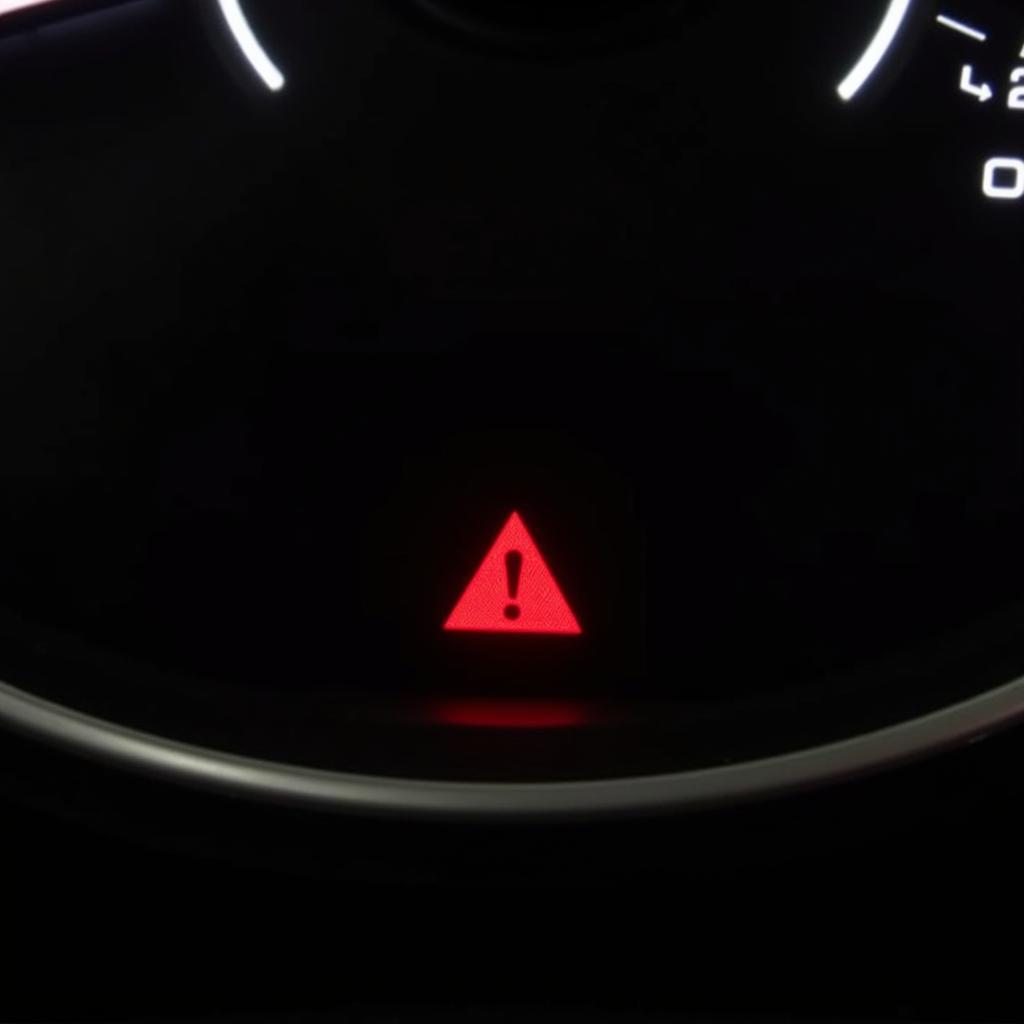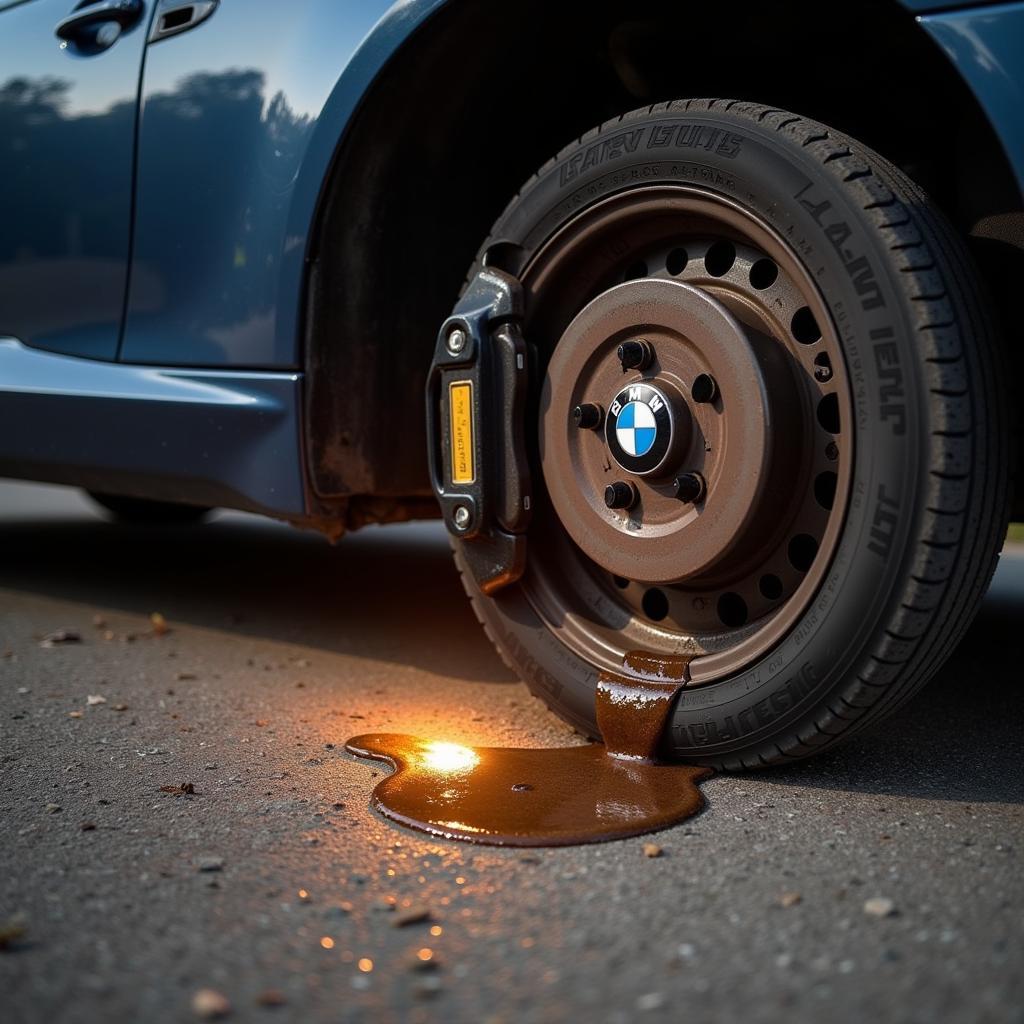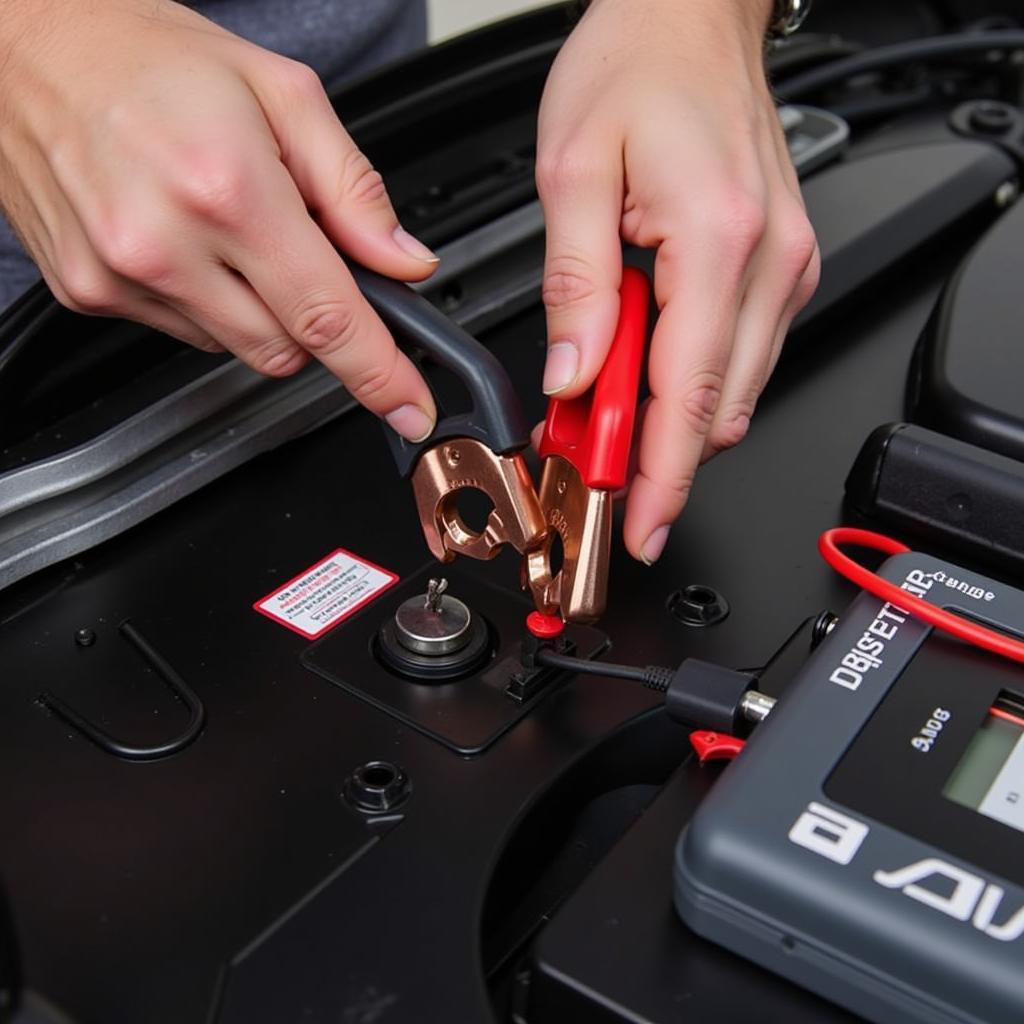Seeing a red brake warning light illuminated on your BMW E90’s dashboard can be a nerve-wracking experience. This warning light, often accompanied by a chime sound, indicates a potential problem with your braking system that requires immediate attention. Ignoring this warning could lead to reduced braking performance and potentially dangerous driving situations.
This comprehensive guide will delve into the common causes of the red brake warning light on BMW E90 models and provide you with a step-by-step approach to diagnose and resolve the issue.
Understanding Your BMW E90’s Brake Warning System
Your BMW E90 is equipped with a sophisticated electronic brake system that constantly monitors various components for optimal performance. The red brake warning light serves as a crucial communication channel, alerting you to potential issues within this system.
The warning light can be triggered by a range of factors, from something as simple as low brake fluid to more complex problems like a faulty wheel speed sensor or a malfunctioning ABS module.
 BMW E90 Dashboard Brake Warning Light
BMW E90 Dashboard Brake Warning Light
Common Causes of the Red Brake Warning Light
While the red brake warning light itself doesn’t pinpoint the exact problem, it does narrow down the potential culprits to your vehicle’s braking system. Here are some of the most common causes:
1. Low Brake Fluid Level
One of the most frequent reasons for the red brake warning light is a low brake fluid level. Brake fluid is the lifeblood of your braking system, transmitting the force from your foot on the brake pedal to the brake calipers, which then squeeze the brake pads against the rotors to slow down or stop your car.
Over time, brake pads wear down, and this wear can lead to a decrease in the brake fluid level in the reservoir. If the brake fluid level drops too low, it can trigger the warning light.
2. Worn Brake Pads
As mentioned earlier, brake pads wear down with use. When they reach a certain thickness, a sensor embedded within the brake pad will contact the brake rotor, triggering the brake warning light. This system is designed to alert you to replace your brake pads before they wear down completely and cause damage to the rotors.
3. Faulty Brake Pad Wear Sensors
While designed for durability, brake pad wear sensors can sometimes malfunction. A broken sensor wire or a faulty sensor itself can send a false signal to the car’s computer, illuminating the brake warning light even if your brake pads are in good condition.
4. Issues with the ABS System
Your BMW E90 is equipped with an Anti-lock Braking System (ABS) that prevents the wheels from locking up during hard braking, maintaining steering control. A malfunctioning ABS module, a faulty wheel speed sensor, or a problem with the ABS wiring can all trigger the red brake warning light.
5. Brake Fluid Leak
A brake fluid leak, while less common, is a serious issue that requires immediate attention. Inspect the area around your car’s wheels and under the hood for any signs of fluid leaks. Brake fluid is typically clear to amber in color and has a slightly oily consistency.
 Brake Fluid Leak on BMW E90
Brake Fluid Leak on BMW E90
Diagnosing the Red Brake Warning Light
Before jumping to conclusions and replacing components unnecessarily, it’s crucial to diagnose the root cause of the warning light. Here’s a step-by-step approach:
-
Check the Brake Fluid Level: Park your car on a level surface and locate the brake fluid reservoir under the hood. The reservoir will have a “DOT 4” marking indicating the type of brake fluid used. Check the fluid level against the minimum and maximum markers on the reservoir. If the level is low, adding brake fluid might temporarily address the warning light, but it’s crucial to inspect for leaks or worn brake pads.
-
Inspect the Brake Pads: If you have access to basic tools, you can remove a wheel to visually inspect the thickness of your brake pads. If the pads are worn down close to the metal backing plate, they need replacement. Refer to your owner’s manual or search for a “how to turn off brake pad warning light bmw” guide online for specific instructions on checking your BMW E90’s brake pads.
-
Scan for Fault Codes: If the brake fluid level is normal and your brake pads appear to have sufficient life left, it’s time to scan your car’s computer for any stored fault codes. A professional-grade diagnostic scanner can access these codes, providing valuable insights into the specific area of the braking system experiencing issues. You can find more information about common BMW warning symbols at our dedicated bmw e90 brake warning symbol page.
Resolving the Issue
The solution to your red brake warning light depends entirely on the underlying cause. Here are some potential fixes:
- Adding Brake Fluid: If the brake fluid level is low, carefully top it off with the correct DOT 4 brake fluid specified in your owner’s manual.
- Replacing Brake Pads: Worn brake pads require replacement. This is typically a straightforward job that can be done at home with basic tools, but if you’re not comfortable working on your car, it’s best to leave it to a professional.
- Replacing Brake Pad Wear Sensors: If you determine that a faulty sensor is the culprit, replacing it will resolve the issue.
- Addressing ABS System Problems: Issues with the ABS system can be more complex and often require the expertise of a qualified mechanic.
When to Seek Professional Help
While some causes of the red brake warning light can be diagnosed and fixed with basic DIY skills, others require the attention of a professional mechanic, especially if you’re not comfortable working on your car’s braking system. If you experience any of the following, seek professional help immediately:
- You’re not comfortable working on your car’s braking system
- The brake pedal feels spongy or goes all the way to the floor
- You hear grinding or squealing noises when braking
- Your car pulls to one side when braking
For more information about unusual sounds coming from your brakes, refer to our comprehensive guide on brake pads warning sound.
Conclusion
The red brake warning light on your BMW E90 is a crucial safety feature that should never be ignored. Understanding its potential causes and how to diagnose the issue can help you address the problem promptly and safely. Remember, a well-maintained braking system is paramount for your safety and the safety of others on the road.

